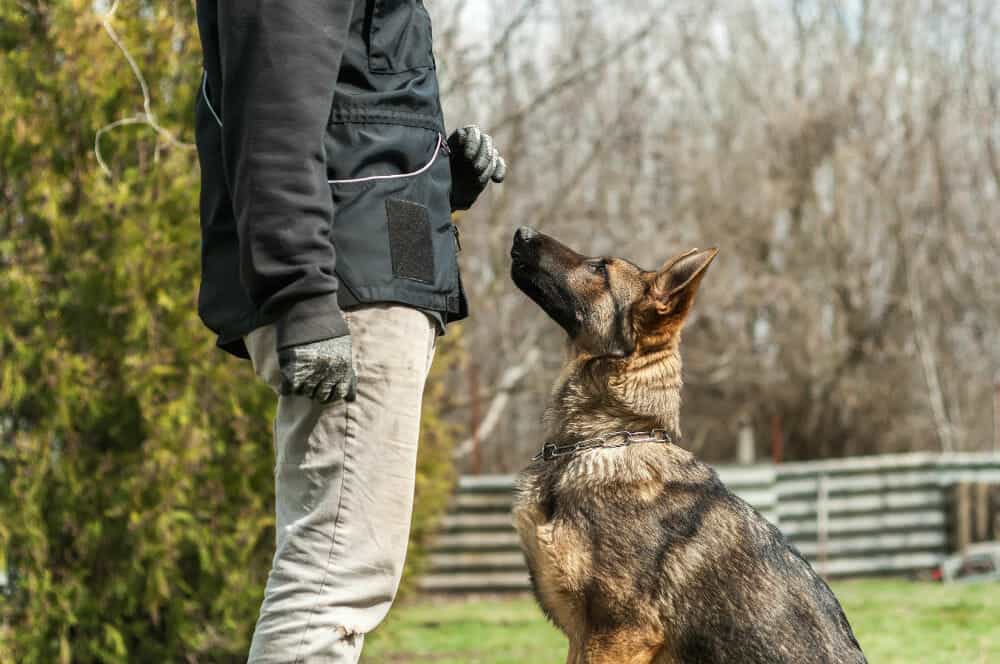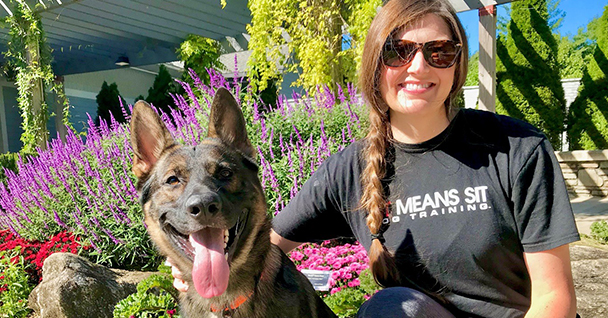Necessary Tips for Effective Dog Training: An Overview for Animal Owners
Efficient pet dog training is a complex procedure that needs a calculated strategy customized to both the pet's personality and the proprietor's goals. Understanding exactly how to navigate these challenges can considerably boost the training experience, ultimately changing the partnership between proprietor and pet.
Recognizing Canine Actions
Understanding dog actions is essential for efficient training and fostering a harmonious relationship in between pooches and their owners. Pets interact primarily with body movement, articulations, and actions, making it important for owners to analyze these signals precisely. Acknowledging a canine's position, tail placement, and ear alignment can provide insights into its emotion. As an example, a wagging tail does not constantly indicate joy; it can also signify exhilaration or stress and anxiety.

Socializing plays a significant function in pet habits; exposure to different atmospheres, people, and various other animals can dramatically affect a pet's character. Aspects such as type characteristics and private character should lead training approaches, as some breeds might have particular behavior attributes that require tailored methods. By understanding these aspects, owners can develop a helpful setting that motivates positive actions, causing successful training results and a much deeper bond with their pets.
Establishing Consistent Commands
Efficient communication with your pet dog starts with establishing constant commands. This fundamental element of training is important for cultivating understanding between you and your pet dog. Uniformity in the commands you utilize ensures that your dog can reliably associate particular words or expressions with the desired habits.
When choosing commands, choose clear, distinct words that are very easy to claim and differentiate from one an additional. Avoid making use of similar-sounding commands that might puzzle your pet. As an example, utilizing "rest" and "remain" is ideal, however "rest" and "hit" might result in misconceptions.
Furthermore, preserve the exact same tone and volume for every command. Pets are delicate to vocal signs, so varying your tone can produce confusion.
It is equally crucial to guarantee that all household participants get on the exact same web page regarding the commands utilized. A united front in command usage will certainly protect against blended signals and enhance the learning process.
Favorable Reinforcement Techniques
The power of positive reinforcement in pet training lies in its capacity to motivate desired habits with benefits and appreciation. This strategy is grounded in the principle that actions followed by desirable results are most likely to be repeated. By integrating favorable reinforcement right into your training routine, you can successfully shape your canine's actions in a positive manner.
To carry out favorable reinforcement, it's important to identify what encourages your dog, whether it be treats, playthings, or verbal appreciation. When your pet dog executes a desired action, such as remaining on command, instantly award them with a reward or love. This association in between the command and the positive result reinforces their understanding.
It's vital to timing the incentives properly; supplying the support within seconds of the desired behavior helps your dog make the link (dog training). Additionally, consistency is essential-- guarantee that all member of the family use the same commands and incentive systems to avoid complication

Slowly, you can minimize the regularity of treats as your canine learns the actions, transitioning to praise or recurring rewards. This method not only cultivates a strong bond between you and your pet dog however also advertises a positive learning environment, making training an enjoyable experience for both.
Socialization and Communication
Continually exposing your pet to a range of environments, people, and other animals is critical for their social advancement. Socialization should start early, preferably during the essential home window of 3 to 14 weeks, when puppies are most responsive to brand-new experiences. Nonetheless, older pet dogs can likewise take advantage of continuous socializing efforts.
Introduce your canine to different setups, such as parks, pet-friendly shops, and city locations. This exposure assists them adjust to various stimulations, reducing stress and anxiety and worry responses. Motivate positive interactions with other pets and people, guaranteeing that these experiences are controlled and secure to cultivate self-confidence.
Use structured playdates with courteous pets, as this can improve your dog's social abilities and show them suitable behavior. Obedience courses and training sessions additionally give superb chances for socialization, permitting your pet dog to engage with others in a supervised environment.
Monitor your pet's body Related Site movement during interactions, as this will certainly help you gauge their convenience level. Gradually enhance exposure to even more challenging situations while guaranteeing that each experience is favorable. A well-socialized pet is most likely to display balanced habits, making them a delight to have in any kind of setting.
Dealing With Typical Training Difficulties
Every pet proprietor will run into training difficulties at some factor, click for more info no matter of their pet dog's age or socializing degree. Identifying usual concerns such as stubbornness, interruptions, and terror can aid in establishing reliable methods for improvement.

Progressively introduce diversions as the canine comes to be much more skilled in commands. Short, constant training sessions are additionally reliable in maintaining attention.
Terror can prevent a dog's knowing procedure. Progressive desensitization to the resource of worry, paired with positive support, can aid reduce anxiousness. Persistence is essential; never compel a dog into a circumstance that creates distress, as this might worsen the problem.
Inevitably, understanding and addressing these usual challenges with an organized technique will cultivate an extra efficient training experience, reinforcing the bond in between pet dog and proprietor while advertising efficient learning.
Final Thought
In recap, successful pet dog training depends on a thorough understanding of canine actions, the establishment of consistent commands, and the application of positive reinforcement techniques. Socializing plays an essential duty in creating well-adjusted animals, while attending to common training challenges requires persistence and versatility. By executing these important methods, pet owners can foster a solid bond with their dogs and promote preferable habits, eventually bring about a harmonious connection in between humans and their canine friends.
Comprehending pop over to these guys pet dog habits is essential for effective training and promoting a harmonious relationship between canines and their proprietors.Socialization plays a substantial function in canine actions; exposure to different settings, individuals, and various other animals can dramatically impact a pet dog's personality.The power of positive support in canine training exists in its capacity to encourage desired actions through benefits and appreciation. By incorporating positive support into your training regimen, you can successfully form your pet dog's behavior in a useful fashion.
In recap, successful pet training relies on a detailed understanding of canine behavior, the facility of regular commands, and the application of favorable support strategies.